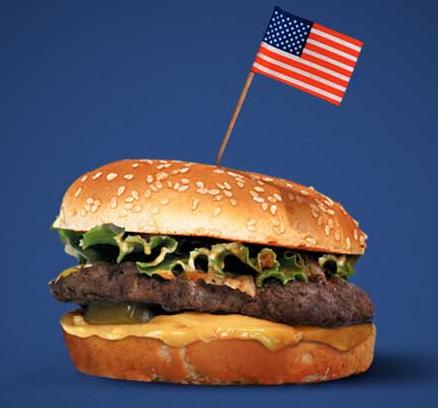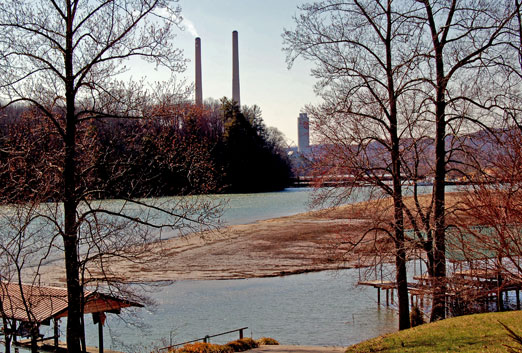
For years fast food restaurants have been our nation’s go-to source for cheap, quick food we can eat on the run or take home to the family to avoid cooking dinner for the night. I am betting that almost every person reading this blog has or will eat a product of the fast food faction at some point this week. Well, thinking about our fan base…maybe not. According to a 2004 study by the International Trade Leader, Americans are ranked number one when it comes to the purchasing of convenience meals—spending a total of $148.6 billion, more than our spending on higher education. Among the top ten nations listed, the United States is responsible for almost two-thirds of the total spending on fast food meals. Aside from the commonplace debate about whether to buy organic or conventional fruits or vegetables, there are an overwhelming amount of other choices made every day that can ultimately have both personal and global consequences. What many people don’t realize is that our national diet may not only affect our waist sizes, but it may also lead to environmental, political, cultural, social and ethical repercussions.
People are now, more than ever, beginning to value those things in life that can be obtained fast, cheap, and easy—including the food we eat. In the past five years, the fast food nation as we know it grew unexpectedly. There is one major contributor, responsible for about 80% of this growth. Two words: drive through. Recently, our country has seen a rapid increase in the amount of drive-through lanes at fast food institutions. More than half the money spent at fast food restaurants is received through a drive-through window from a customer tucked behind the steering wheel and hopefully a seatbelt. Today, 90% of the 13,000 McDonald’s restaurants in the United States have a drive-through lane; Starbucks has picked up the pace and added drive-through lanes to many of their stores across the country; and one fast food business called Good to Go has 14 drive-through lanes at their Houston location alone.
Now, I would like to do something a little different here. I am going to talk my way through a normal visit to a local fast food place—starting from the time you start your engine to the time you eat the last fry.
So, let’s say you are jonesing for a cheeseburger and french fries. You decide to take a break from your television marathon and go to the nearest fast food joint to get some food. You hop into your Ford Focus and drive about seven or so minutes to the restaurant (making the entire trip a total of 15 minutes, minus the time spent in the drive-thru lane). It takes about 8000 litres of air, weighing almost 12 kg, to burn one litre of gasoline or diesel. Furthermore, for every litre of petrol you burn, you emit 2.5 kg of carbon dioxide. Aside from carbon dioxide, our cars also emit carbon monoxide, lead and hydrocarbons while we are driving through the act of petrol combustion. This has lead many to believe that driving a car is probably the most polluting act an average citizen can commit in their lifetime. In recent years, emissions from passenger vehicles in the United States have increased thanks to the increase in vehicle usage and the nationwide preference for larger vehicles. An average new vehicle in 2003 consumed far more fuel than its counterpart in 1988. So, what can you do? Like Kirsten said in an earlier blog entry—drive less. Both local and global pollution would be reduced if each car-driving person pledged to use their car 30% less starting immediately.
Since you just ran out of the house and you are still wearing your pajamas, you decide to order from the drive-through lane to avoid the embarrassment and save some time. You pull into the line and notice four other cars in front of you—all burning around the same amount of petrol and releasing carbon dioxide into the air. Many believe that avoiding the drive-through lane and parking your car is the greenest thing to do. On the contrary, some researchers in Canada have claimed that a parking-only restaurant produces 20% more smog pollution and 60% more greenhouse gases than a restaurant with a drive-through lane due to the stopping and restarting of cooled-down vehicle engines.
Finally, you pull up to the speaker box and place your order—a cheeseburger with everything on it, an order of french fries, and a small coke. When it comes to fast food restaurants, up to $1,000 a month can be spent on electric bills for one location alone. Air conditioning and lighting account for 25% to 40% of the electrical spending, while refrigeration shares the majority with other expenses including powering the speaker box and indoor cooking appliances.
You drive forward to the drive-through window and wait patiently for your food. One of the most overlooked energy users at fast food restaurants are the drive-through windows themselves. The window is oftentimes left open unnecessarily during the drive-through process, letting air-conditioned air escape. The employee appears in the window and hands you your order. Your total is $6.99. You give them cash, they give you change, and you take a peek inside the paper bag to make sure everything is there. You see your cheeseburger wrapped in paper and your fries sitting in its cardboard packaging, along with some napkins and a few packets of ketchup. You grab your drink and take a sip of the coke from the straw protruding from the paper cup. In general, fast food outlets are our country’s primary source of urban litter, which includes the paper, plastic, and Styrofoam packaging material. The most abundant type of litter (not counting cigarette buds) is Styrofoam, which becomes a permanent fixture in our environment when littered. Moreover, plastic is the largest source of marine debris. In some areas of the Pacific Ocean plastic has become so concentrated, there is six times more plastic than there is plankton. These materials from fast food restaurants have become a huge burden on the local communities. Less than 35% of the waste from fast food businesses is diverted from landfills. Every year millions of pounds of food packaging waste litter our roadways, clog our landfills, and spoil our quality of life. Food packaging takes up 15% of landfills. About three-fourths of all food packaging come from forests, with half of landfill waste being made of either paper or wood. The Southern forests of North America supply 60% of United States and 15% of global paper demands. This demand for wood and paper products has led to deforestation, resulting in a total decline from 356 million acres in colonial times to 182 million acres today.
You give your thanks and drive off. As you drive you start nibbling on some fries because they taste better when they’re hot. In order to fry these delicious pieces of potato, fast food institutions use fryers, which ultimately requires a lot of oil and energy to operate. There is now a new generation of fryers that supposedly allow restaurants to cook the same amount of product with approximately 40% less oil. Furthermore, these low oil volume fryers use about 4% less energy than their standard counterparts.
Once you get home you turn the television back on and sit down to eat your meal. You bite into your cheeseburger and slurp some of your coke. According to the Economist, Americans eat as many as three burgers a week for a total of 150 burgers every year. Believe it or not, the cheeseburger has its own footprint and global warming impact. There is a ton of energy cost associated with a common cheeseburger, including what it takes to grow the feed for the cattle for beef and cheese, growing the produce, storing and transporting the components, as well as actually cooking the burger. The total greenhouse gas emissions that arise every year from the production and consumption of cheeseburgers are roughly equal to the amount emitted by 6.5 million to 19.6 million SUVs.
Bon appetit.
This blog entry isn’t meant to scare anyone out of eating a cheeseburger or prevent anyone from going to a fast food restaurant. It is meant to provide you with information on topics you may not know about, help you to open your eyes, and get you to think about the things you do everyday that can ultimately affect the world and the people around you.
Until next time.
Ashlie Lynn Chandler
###
By promoting cleaner energy, cleaner government, cleaner cars, and cleaner air for all Texans, we hope to provide for a healthy place to live and prosper. We are Public Citizen Texas.
Read Full Post »
 In Winter of 2008 a coal ash slurry pond in Tennessee broke its damn, contaminating miles of downstream waterways and people’s homes with deadly carcinogens and other toxic substances. At the time it was called the worst environmental disaster since the Exxon Valdez and brought a wake up call to the EPA that this waste product was entirely under-regulated. EPA now stands poised to set new regulations on coal ash waste, but the coal industry is lobbying strenuously against it, advocating for a much weaker standard that will do little to change the status quo.
In Winter of 2008 a coal ash slurry pond in Tennessee broke its damn, contaminating miles of downstream waterways and people’s homes with deadly carcinogens and other toxic substances. At the time it was called the worst environmental disaster since the Exxon Valdez and brought a wake up call to the EPA that this waste product was entirely under-regulated. EPA now stands poised to set new regulations on coal ash waste, but the coal industry is lobbying strenuously against it, advocating for a much weaker standard that will do little to change the status quo.
 TODAY is our National Coal Ash Day of Action – please ask the White House to allow the US EPA to finally regulate coal ash as the hazardous waste it is. Currently, coal ash is less regulated than household trash! This toxic waste stream has never been regulated and that must change, now.
TODAY is our National Coal Ash Day of Action – please ask the White House to allow the US EPA to finally regulate coal ash as the hazardous waste it is. Currently, coal ash is less regulated than household trash! This toxic waste stream has never been regulated and that must change, now. It is extremely important that Texans call in because
It is extremely important that Texans call in because 


